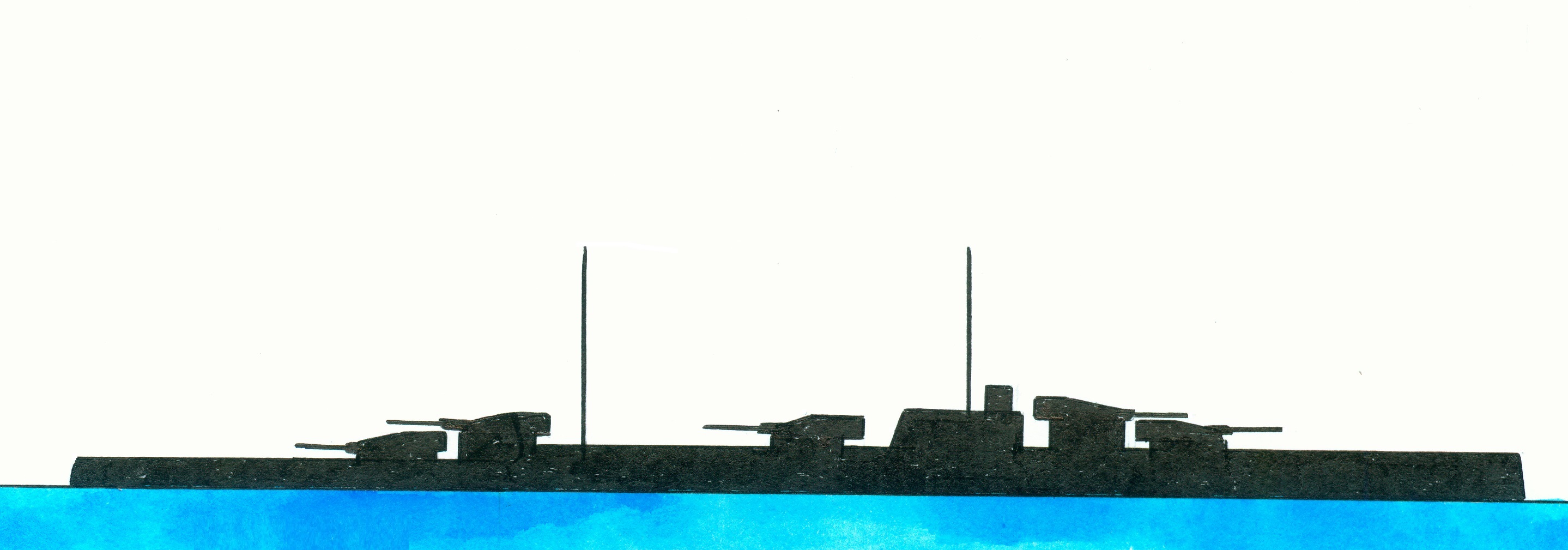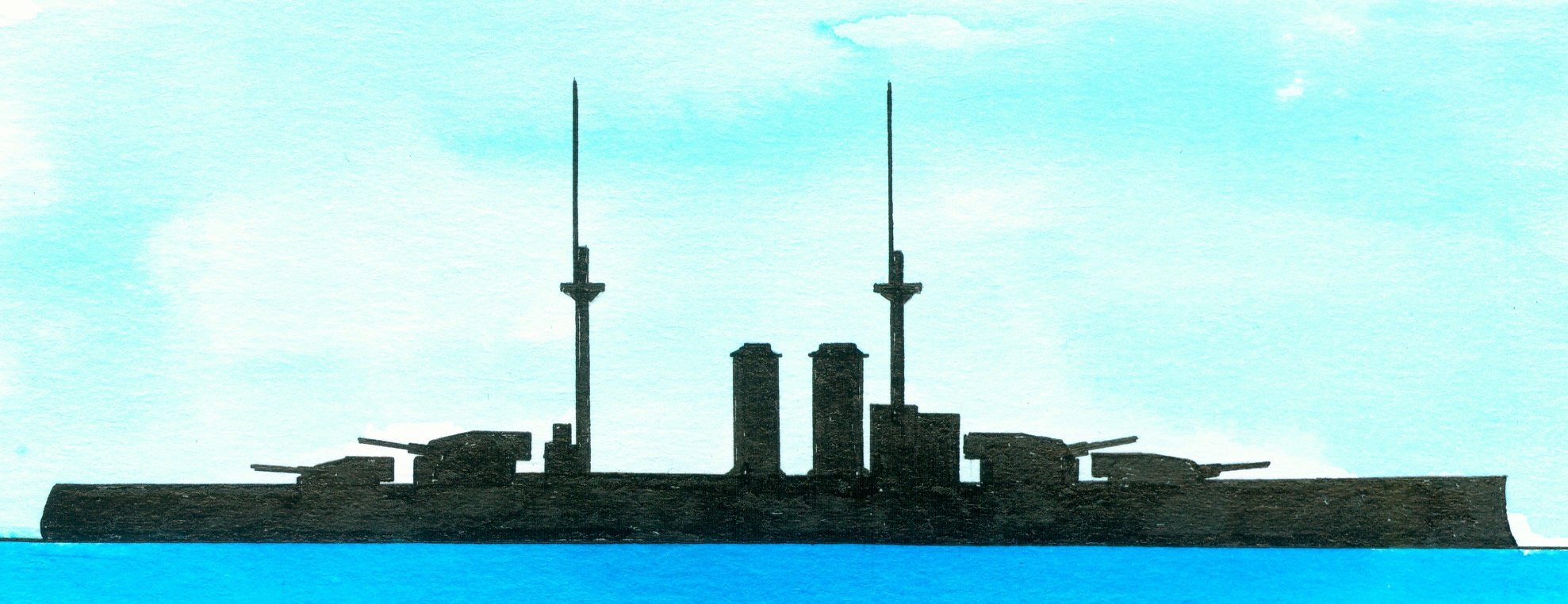German König-class
Austrian Tegethoff-class
German Bayern-class
The Bayern-class, designed between 1910-1912, consisted of the Bayern, Baden, Sachsen and Württemberg, preceded by the König-class and was to be succeeded by the never realized L20a-class. Built under the Naval Law of 1912 when additionally budget was approved after the so-called Agadir crisis in April 1911 when French troops supported the Moroccan sultan in a rebellion. Germany sent the gunboat SMS Panther (later replaced by the cruiser SMS Berlin) to Agadir to test the relationship between France and the United Kingdom. In fact also the protection and expansion and of German colonial interests in Africa. Laid down at Schichau-Werke, Danzig with yard number 913 in December 1913, launched on 30 October 1915, commissioned on 14 March 1917, beached in Gutter Sound, Scapa Flow, Orkney Islands on 21 June 1919 and sunk as a target on 16 August 1921. Building costs 49 million Goldmarks.
The Krupp cemented armour consisted of 17-35cm/6.7-13.8” thick belt, 6-10cm/2.3-3.9” thick deck with the conning tower and turrets protected by respectively 40cm/16” and 10-35cm/3.9-13.8”. Displacement 28.530 (normal)- 32.200 (full load) tons and as dimensions 179,4 (waterline)-180 (over all) x 30 x 9,39 metres or 588.7 x 590.7 x 98.5 x 30.10 feet. For constructing the hull were transverse and longitudinal steel frames used. The outer hull plates were connected to the frames via riveting. Except for a double bottom covering 88% of the hulls length was as further protection the hull divided in 17 watertight compartments. The armament consisted of 4x2-38cm/15” L/45 quick firing guns, 16x1-15cm/5.9 L/45 quick firing guns, 2/4x1-8,8cm/3.5” guns and 5x1-60cm/24” submerged torpedo tubes (1xbow, 2 on each broadside). At first was intended to fit this class with triple gun turrets but this idea was left regarded the problems of the Austrian Tegethoff-class battleships. This resulted in twin gun turrets and to compensate was a larger calibre mounted, instead of 12-30,5cm/12” guns was chosen for 8-38cm/15” guns. The 3 sets of Parsons steam turbines and 14 boilers (11 coal fuelled Schulz-Thornycroft, 3 oil-fuelled Schulz-Thornycroft) supplied via 3 shafts at 265rpm 34.521 (design)-55.505 (trials) shp, allowing a speed of 21 (design)-22 knots and with a reduced speed of 12 respectively 15 and 21,5 knots was the range 5.000, 3.740 and 2.390 nautical miles. Coal bunker capacity 900 (design)-3.400 tons and oil bunker capacity 200 (design)-620 (maximum) tons. The crew numbered between 1.187-1.271 men (flagship). The Krupp cemented armour consisted of 17-35cm/6.7-13.8” thick belt, 6-10cm/2.3-3.9” thick deck with the conning tower and turrets protected by respectively 40cm/16” and 10-35cm/3.9-13.8”. The armament consisted of 4x2-38cm/15” L/45 quick firing guns, 16x1-15cm/5.9 L/45 quick firing guns, 2x1-8,8cm/3.5” guns and 5x1-60cm/24” submerged torpedo tubes (1xbow, 2 on each broadside, the latter removed after 1917). At first was intended to fit this class with triple gun turrets but this idea was left regarded the problems of the Austrian Tegethoff-class battleships. This resulted in twin gun turrets and to compensate was a larger calibre mounted, instead of 12-30,5cm/12” guns was chosen for 8-38cm/15” guns.



